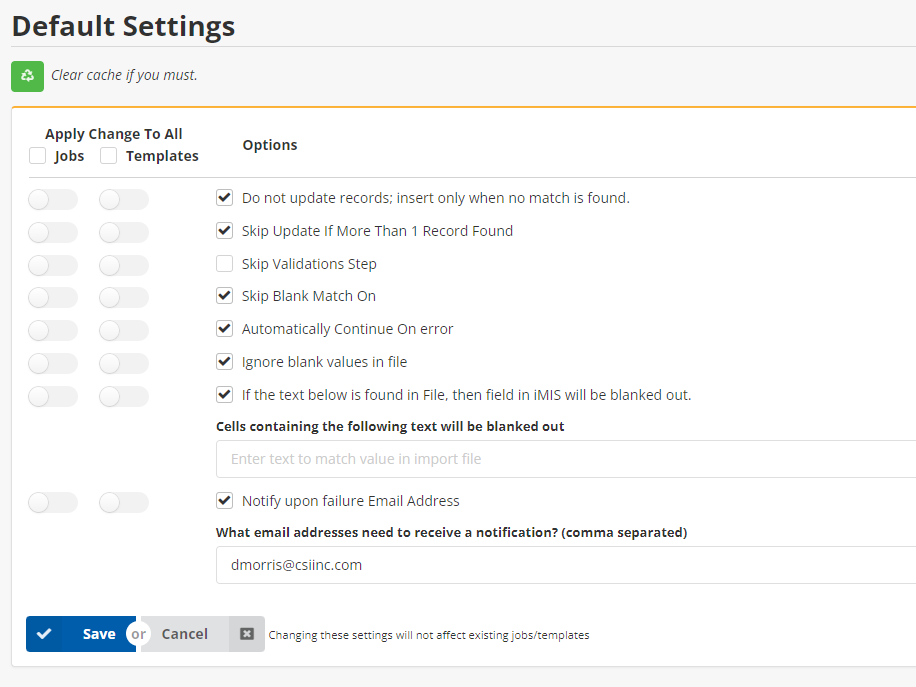Task Options
Overview
The output of your job can vary based on the different options you have selected. Settings happen at three different levels:
Global Settings. Using the top navigation, select Settings to see what global settings are. These will be the default settings when starting a new task.
Template Settings. When you make a Task Template, the settings at the time the template was made will be stored. To update template settings, load the template, make the changes, and resave the template.
Task Settings. These are initially set by global settings and can be changed one-off for a specific task.
When changing the default global option settings you can apply the specific change to All Jobs, All Templates, or neither.
Settings
Option | Actions Applicable | Description |
|---|---|---|
Do not update records; insert only when no match is found |
| Records will be inserted only when a match is not found. Updates will not happen. |
Skip Update If More Than 1 Record Found |
|
If multiple records are found (e.g., multiple activities), none of them will be updated, and the job will move to the next row in the table/IQA query. |
Skip Validation |
|
Allows you to not validate your pending job before being imported. While this might make the import operate a little more quickly, it may be at the expense of bad data being imported. These validations are to ensure that any codes used (e.g., Activity Type, Product Codes, Member Types, etc.) do exist in your iMIS environment before any importing/updating is done. For example, if you are importing an activity and set the Activity Type to MEMBERSHIP, the validations will ensure that Activity Type does exist in iMIS before proceeding. |
Skip Blank Match On |
|
This checkbox should be "ON" by default. When importing, if any MATCH ON fields have a blank value, then iDMS will skip the import row. There are rare occasions where a user may want to match on a blank value. If that is the case, disable this setting. |
Automatically Continue on Error |
| This feature will continue processing the spreadsheet or IQA if an error is encountered on a specific record. It will move onto the next record. At the end of the job, the failed records will be listed and available to download. |
Ignore Blank Values |
| Fields chosen for import from your spreadsheet will not overwrite data in iMIS if those fields are blank (i.e. if a column in spreadsheet or IQA query is blank, the existing data in iMIS will not be overridden by the blank value and will instead not be updated). If your spreadsheet column is mapped to a numeric data type and your spreadsheet value is blank, you will most likely get a validation error similar to: "Value was not recognized as a valid Number". In this instance you will want to Ignore blank values in the import file. This will insert zeroes into the iMIS column values. |
If the text below is found in file, then field in iMIS will be blanked out |
| This feature allows you to blank out a value in iMIS when you designate specific text in your spreadsheet. When the import finds that value specified in the text box it will insert a blank value into the field in iMIS it was mapped to. We recommend to use the process outlined below if you need to blank out a field in iMIS instead of updating the field to a space or to have no value. iDMS will blank out the field properly based upon the field type. |
Refreshing the Cache
Navigate to the iDMS Dashboard and click Settings. Click the green refresh symbol. Clearing the cache is safe and can be done without negative side effects. 

